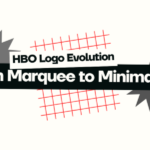Typography is the artistic technique for creating and designing objects and illustrations. It allows readers to scan and understand the written text easily.
It improves the readability and aesthetics of written content. It is one of the most important abilities that each graphic and internet designer must acquire. It is important in all print and digital design processes.
To be precise, typography has two purposes in graphic design. The first is to increase readability, and the second is to help convey a design item’s content, tone, and mood. It is the skill of organizing letters and phrases such that the reader can easily read, understand, and find the content aesthetically pleasing.
Its key emphasis is to focus on style, appearance, and structure, intending to evoke particular feelings and communicate specific messages. It would not be wrong to say that typography brings the words to life.
In this blog post, we will discuss the importance of typography in graphic design.
Forms of Typography
There are different forms of typographies which include:
- Serif fonts
- Sans-serif
- Modern.
- Script
- Display
WHY TYPOGRAPHY IS IMPORTANT?
Today, typography is considered important in the digital world, just like calligraphy did in the past. Original fonts are made by graphic designers using their talents.
Effective typography may help users engage with a brand more quickly and retain their undivided attention when using typefaces, fonts, and letterforms that are already in use.
Powerful typography also establishes the general tone of a website, item, service, or brand.
Certain parts of typography may help optimize, inform, and guide the user, providing for a more positive overall user experience regarding accessibility and readability, which is usually a good thing!
Typography is an essential part of the design since, in the end, it’s about conveying a message through words to the reader.
Readability, hierarchy, and brand recognition are all facilitated by typography. Let’s examine how to use typography in graphic design to achieve your goals effectively.
Typography Develops Connection and Brand Recognition
Although many factors go into creating a brand’s tone, voice, messaging, and logo, typography significantly impacts how those elements turn out. That thrill you experience when an Amazon “smile” delivery arrives at your door? It is intentional, my buddy.
This is the power of font design—the capacity to provide a place for a subconscious association with the brand and to strengthen the personality of a website or product, resulting in a closer, more direct relationship with the user, increasing trust and recognition, and promoting referral marketing.
Typography Holds Users’ Attention
You have seconds to capture the ordinary person’s attention since they have a short attention span and keep them intrigued with your design.
Memorable and appealing types may influence various factors, including how long a visitor stays on a website or sales page and how engaged they are with a specific offer or product.
Typography Influences the Audience’s Decision Making
Effective, striking typography can convey the essence and personality of a brand, evoke a certain mood or emotion in the user, and persuade or motivate the target audience.
Typography is a Key Component of User Interface
You get only one opportunity to create a solid first impression, which we are sure you know.
In user interface design, effective typography might be the difference between a wonderful first impression and a forgettable one when a user lands on a webpage or opens an app for the first time.
Nobody desires to be forgotten! Right? Right.
An interface may be made more engaging by using typography. Consider it this way: A disorganized UI can confuse and quickly repel users. However, a simple, clear user interface enables an excellent user experience.
Typography Establishes a Visual Hierarchy and Harmony
Using different font sizes and forms draws attention to the most important details. This makes it swift and simple for the audience to determine what deserves more careful consideration.
Paddings, margins, and contrast are other components of a good visual hierarchy. Establishing consistency and harmony throughout by sticking to your selected patterns and scales results in a well-organized and clear presentation.
Looking for an Affordable
Logo Design Services
Get in touch with our 24/7 available representatives now!
Chat With us to avail 30% OFF
Typography Optimizes Readability and Accessibility
It is our duty as designers to take into account users who have learning difficulties, poor vision, a learning disability, aphasia, or not sufficient adult literacy. Readability and accessibility are directly affected by all typographic aspects.
Accessible typography may help the reader locate the start of each line, know what to pay attention to, and evaluate readability.
For written material to be as accessible as feasible, typographic components are essential.
Creates an Aesthetic Feel
Choosing the right typeface is the foundation of effective typographic use. The typeface needs to be as simple as possible. It shouldn’t be too small or run-down. It’s important to choose readable fonts in presentations.
The fonts make your writing easier to read. It helps readers understand the text’s material. Using colors, typefaces, and text sizes might attract your target audience.
Works on Building Moods
An example of typography use might be a video game commercial. It could contain some of the most intriguing elements of the game. In this case, you should provide engaging, dynamic, and stylish typography.
The designer’s text alignment and arrangement choice significantly impact the text’s readability. The typeface has often been oriented by designers in one of four ways: right, left, centered, or justified.
Use clear, professional fonts if your writing has to be taken seriously. The typeface that is used affects how the text is read.
Conclusion
Typography is frequently overlooked even though it plays a crucial role in user interface design. Developing a strong understanding of typography can help you build the ideal website. If any help is needed to figure out where to start, visit your favorite websites and take notes on the typefaces they’ve picked.
Good Luck Designers!





